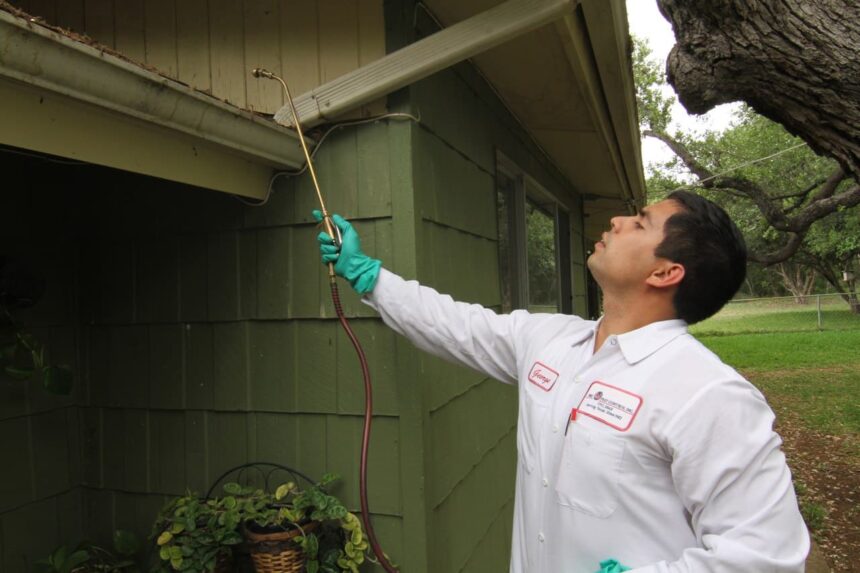Introduction To Pest Control
Pest control is essential for maintaining a healthy and safe living environment. Pests, including insects, rodents, and other unwanted creatures, can cause structural damage, contaminate food, and spread diseases. In particular, bed bugs are notorious for invading homes, causing discomfort and potential health problems. Effective pest control measures and proper bed bug treatment methods are necessary to keep these nuisances at bay.
In this comprehensive guide, we will explore various pest control methods, focusing on bed bug treatment, along with preventive measures to keep your home pest-free.
Understanding Pest Control
Pest control is the process of managing or eliminating pests from homes, workplaces, or agricultural settings. Effective pest control not only eliminates existing infestations but also prevents future occurrences. Pests come in different forms, such as insects, rodents, and wildlife, each requiring specific treatment methods.
Types of Pests
- Insects: Common insects include ants, cockroaches, flies, mosquitoes, termites, and bed bugs.
- Rodents: Mice and rats are prevalent in homes and can cause significant damage.
- Wildlife: Raccoons, squirrels, and other animals may also invade homes in search of shelter.
Why Pest Control is Important
- Health Concerns: Many pests carry diseases that can affect human health. For example, cockroaches can cause allergies, mosquitoes can spread malaria, and bed bugs can lead to skin infections.
- Structural Damage: Pests like termites can destroy wood structures, weakening the foundation of your home.
- Food Contamination: Rodents and insects can contaminate food, leading to the spread of bacteria and foodborne illnesses.
Common Pest Control Methods
- Chemical Treatments: Pesticides are the most common method for pest control. These are chemicals specifically designed to kill or repel pests. Chemical treatments can be applied in the form of sprays, powders, or baits.
- Biological Control: This method uses natural predators or parasites to control pest populations. For instance, introducing ladybugs to a garden can help control aphid infestations.
- Mechanical Control: Physical barriers or traps are used to capture or repel pests. Examples include fly traps, mouse traps, or ultrasonic pest repellers.
- Cultural Control: This involves modifying the environment to make it less conducive to pest survival. For example, keeping your home clean and free of food crumbs can reduce the likelihood of attracting ants or rodents.
- Integrated Pest Management (IPM): This is a holistic approach that combines multiple pest control methods for long-term pest prevention. IPM focuses on monitoring and managing pest populations while minimizing environmental impact.
Bed Bug Infestations: A Growing Concern
Among the various pests, bed bugs have become one of the most troublesome. These small, blood-sucking insects primarily feed on human blood and are often found in bedding, furniture, and carpets. Bed bugs are difficult to detect and even harder to eradicate once they have established themselves in a home.
What Are Bed Bugs?
Bed bugs (Cimex lectularius) are tiny, reddish-brown insects that hide in cracks and crevices during the day and emerge at night to feed on human blood. Despite their small size, they can cause significant discomfort, including itchy welts and skin rashes. They are most commonly found in:
- Mattresses
- Bed frames
- Box springs
- Headboards
- Carpeting
- Upholstered furniture
How Do Bed Bugs Spread?
Bed bugs are excellent hitchhikers. They can travel from place to place by attaching themselves to clothing, luggage, and furniture. Infestations often occur after staying in infested hotels or bringing secondhand furniture into the home.
Signs of a Bed Bug Infestation
- Bite Marks: Red, itchy welts are the most common sign of bed bug activity. These bites usually appear in clusters or lines on exposed areas of the skin.
- Blood Stains: Small blood stains may appear on sheets or pillowcases after bed bugs have fed.
- Fecal Spots: Bed bugs leave behind small, dark fecal spots on mattresses, walls, or furniture.
- Shed Skins: As bed bugs grow, they shed their outer skins. Finding these skins is a clear indication of an infestation.
Effective Bed Bug Treatment Options
Treating bed bugs requires persistence and a combination of methods to completely eliminate them. Here are some of the most effective bed bug treatment options:
1. Heat Treatment
Heat treatment is one of the most effective ways to eliminate bed bugs. Bed bugs cannot survive at temperatures above 120°F (49°C). Professional exterminators use specialized equipment to raise the temperature of an infested room to a lethal level for bed bugs.
- Pros: Heat treatment is chemical-free and can kill bed bugs in all life stages, including eggs.
- Cons: This method can be expensive and requires professional equipment.
2. Chemical Treatment
Insecticides, such as sprays, dust, and powders, are often used to eliminate bed bugs. Commonly used chemicals include pyrethroids, neonicotinoids, and insect growth regulators. These chemicals target bed bugs’ nervous systems, killing them upon contact.
- Pros: Chemical treatments are widely available and effective.
- Cons: Bed bugs have developed resistance to some chemicals, and multiple treatments may be required.
3. Mattress Encasements
Encasing mattresses and box springs in bed bug-proof covers can prevent bed bugs from infesting these areas. If bed bugs are already present, they will be trapped inside the encasement and eventually die.
- Pros: Mattress encasements are an affordable and long-term solution to prevent bed bugs.
- Cons: This method does not kill bed bugs outside the encased area.
4. Vacuuming and Steam Cleaning
Regular vacuuming can help remove bed bugs from carpets, mattresses, and furniture. Additionally, steam cleaning can kill bed bugs on contact, as steam reaches high temperatures that bed bugs cannot survive.
- Pros: Steam cleaning is chemical-free and safe for use in homes with pets or children.
- Cons: This method requires thoroughness and may not reach all hiding spots.
5. Freezing
Freezing bed bugs is another non-chemical treatment option. Bed bugs cannot survive at temperatures below 32°F (0°C) for extended periods. You can place infested items, such as clothing or bedding, in a freezer to kill the bugs.
- Pros: Freezing is an eco-friendly and cost-effective option.
- Cons: Not practical for large items like mattresses or furniture.
6. Professional Extermination
For severe infestations, it is best to hire a professional pest control service that specializes in bed bug treatment. Exterminators use a combination of chemical and non-chemical methods to eradicate bed bugs from your home.
- Pros: Professional services are thorough and can handle large or persistent infestations.
- Cons: This option can be costly and may require multiple visits.
Preventing Bed Bug Infestations
The best way to deal with bed bugs is to prevent them from entering your home in the first place. Here are some preventive measures to keep bed bugs at bay:
- Inspect Secondhand Furniture: Before bringing used furniture into your home, inspect it thoroughly for signs of bed bugs.
- Check Hotel Rooms: When traveling, inspect hotel mattresses, headboards, and furniture for signs of bed bugs. Keep luggage off the floor and bed, and consider using protective covers for your bags.
- Wash Bedding Regularly: Wash and dry bedding, including sheets, pillowcases, and blankets, on high heat to kill any bed bugs.
- Seal Cracks and Crevices: Bed bugs often hide in small cracks and crevices in walls, baseboards, and furniture. Seal these entry points to reduce the likelihood of an infestation.
- Use Mattress Encasements: As mentioned earlier, encasing your mattress and box spring can prevent bed bugs from infesting these areas.
- Regular Pest Inspections: Conduct regular pest inspections, especially if you live in an area with high bed bug activity.
Conclusion
Pest control is vital for maintaining a clean, safe, and healthy environment, especially when dealing with persistent pests like bed bugs. Effective bed bug treatment requires a combination of heat, chemicals, and preventive measures to ensure the complete eradication of these pests. By staying vigilant and implementing regular pest control practices, you can protect your home from bed bugs and other pests.
Whether you are dealing with an infestation or looking to prevent one, it is essential to stay informed about pest control methods and solutions. For more severe issues, professional pest control services can offer expert solutions tailored to your specific needs.
Incorporating these techniques will not only help you deal with current infestations but also prevent future pest-related problems. Stay proactive, and ensure your home remains a pest-free zone.






